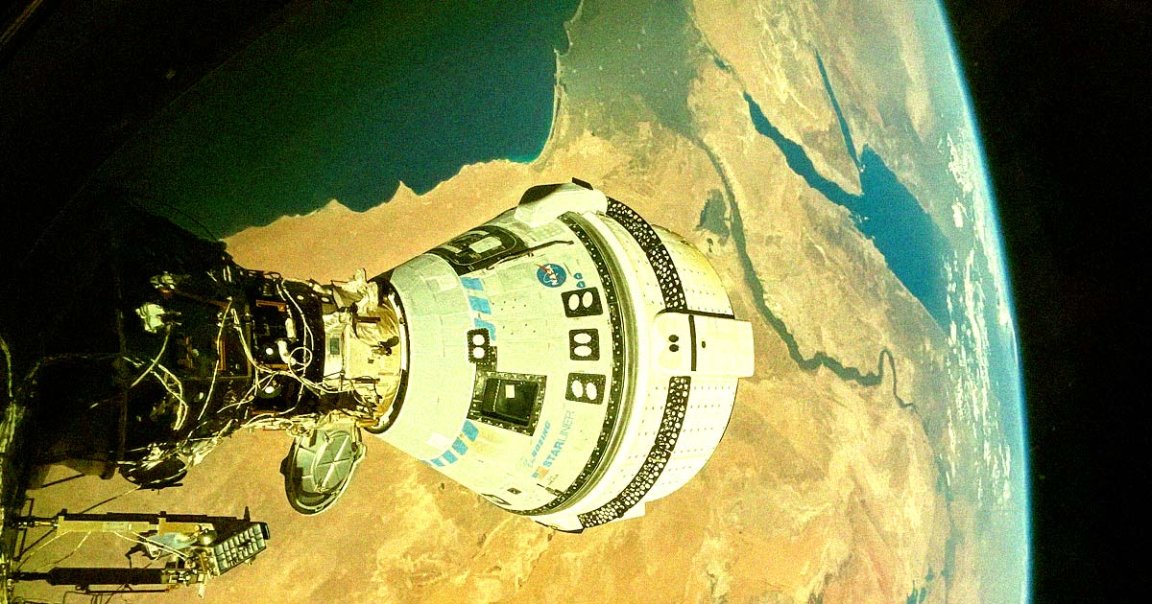
Over the weekend, NASA finally made the decision to return Boeing’s plagued Starliner without a crew on board.
That means stranded NASA astronauts Butch Wilmore and Suni Williams will now have to wait for a SpaceX Crew Dragon to return them from the International Space Station in February, stretching an eight-day journey into an eight-month one.
In other words, the aerospace giant’s first crewed test flight has been a disaster, with technical issues afflicting Starliner’s propulsion system proving insurmountable and putting the company in the position to be “rescued” by its biggest competitor in space tech.
Unsurprisingly, NASA’s decision to return the capsule with no crew on board has been a major blow to morale. As the New York Post reports, Boeing employees were left “humiliated” following the announcement.
Worse yet, it’s not just Starliner’s messy test flight — Boeing has been dealing with numerous crises, from passenger jets falling apart mid-flight to reports of major mismanagement.
“We have had so many embarrassments lately, we’re under a microscope,” one Boeing worker told the NY Post, speaking under condition of anonymity. “This just made it, like, 100 times worse.”
“We hate SpaceX,” he added. “We talk shit about them all the time, and now they’re bailing us out.”
Boeing’s development of its Starliner spacecraft sometimes felt doomed from the start. During its first uncrewed test flight in 2019, flight software issues forced it to plummet back down to Earth without ever reaching the ISS.
Last year, investigators found serious problems with the vehicle’s parachutes and flammable tape inside it, forcing Boeing to stand down at the time.
NASA and Boeing appear to have disagreed strongly on Starliner’s ability to safely return Wilmore and Williams. Boeing has remained adamant that it could reenter and safely land — but NASA had the final say.
The employee acknowledged the risks involved but still blamed NASA.
“They have their own PR issues and don’t need two dead astronauts,” he told NYPost. “But we didn’t think that there would be dead astronauts. We’d never have recommended that they use us if they thought that it was going to be unsafe for them.”
During a press conference over the weekend, NASA’s Commercial Crew Program manager Steve Stich characterized the argument as a “little disagreement about risk.”
Officials even invoked the agency’s fatal Challenger and Columbia shuttle disasters in 1986 and 2003 respectively.
“We lost two space shuttles as a result of there not being a culture in which information could come forward,” said NASA administrator Bill Nelson during the announcement. “We have been very solicitous of all of our employees that if you have some objection, you come forward.”
“Spaceflight is risky, even at its safest, and even at its most routine,” he added. “And a test flight by nature is neither safe nor routine.”
NASA’s decision is a major black eye for Boeing, a company already under intense scrutiny. Despite NASA and Boeing committing many billions of dollars to the project, Starliner has yet to successfully deliver and then return a crew to the ISS.
Meanwhile, SpaceX’s Crew Dragon spacecraft, which was developed under the same NASA contract, already has just shy of a dozen crew missions under its belt without anything even approaching Boeing’s level of drama.
Where NASA will go from here remains to be seen. As Ars Technica suggests, there’s a good chance Starliner won’t launch again with a crew on board until 2026. NASA officials have also mentioned the possibility of another test flight.
Boeing’s staff will now have to pick up the pieces while hoping that Starliner manages to undock and return in one piece.
“It’s shameful,” the Boeing employee told the NYPost. “I’m embarrassed, I’m horrified.”
More on Starliner: It’s Official: NASA Will Rescue Its Stranded Astronauts With SpaceX, Not Boeing’s Plagued Starliner